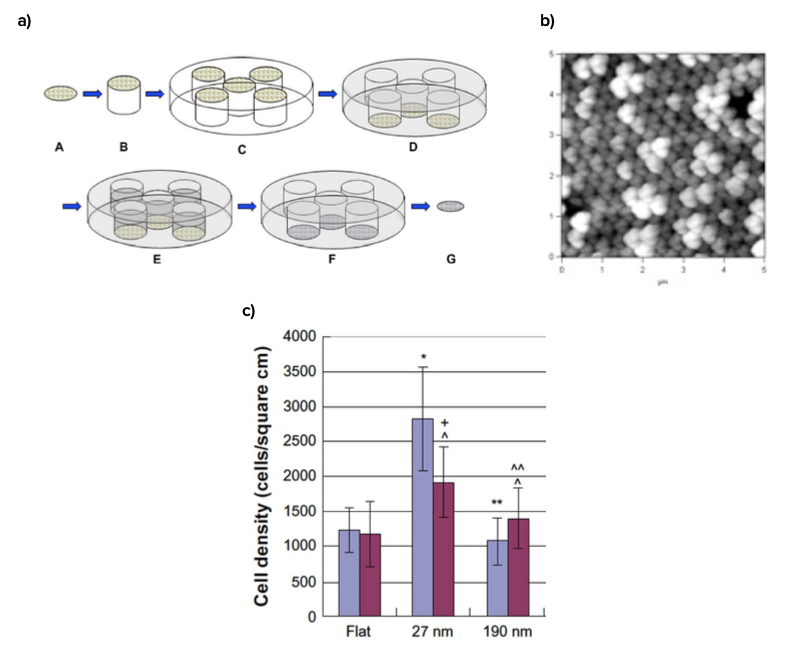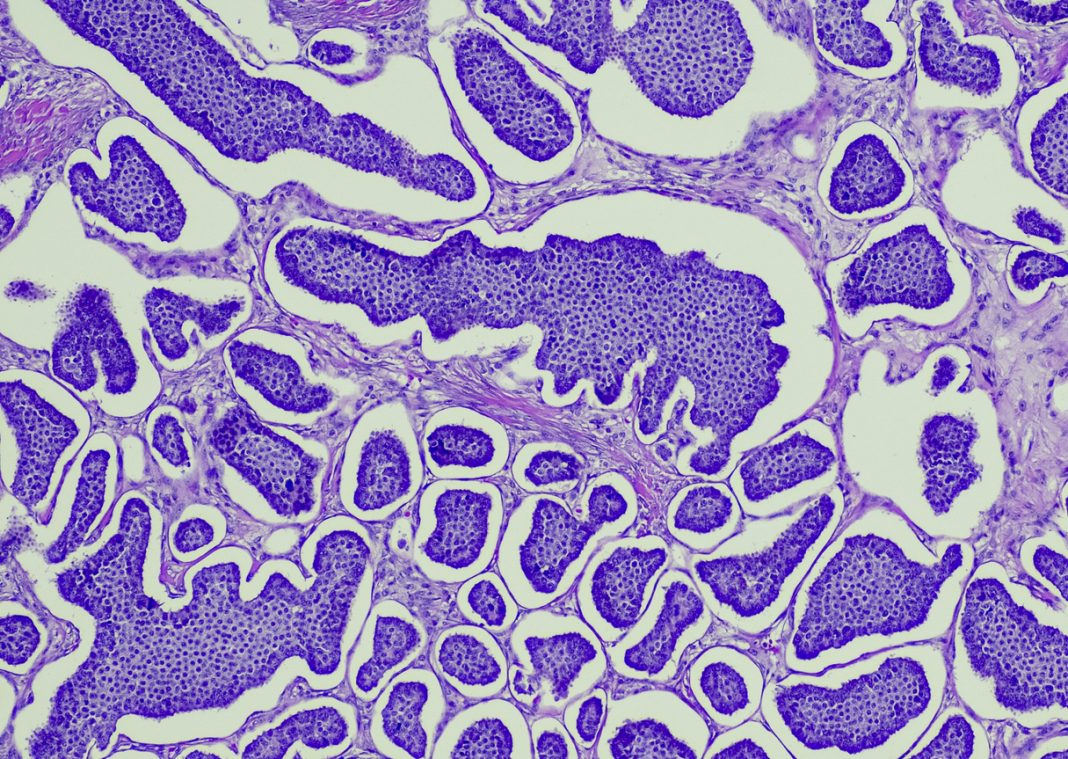Nanotextures on nanoparticles and implants to kill cancer cells in a more targeted manner may just be the key to tackling resistance to traditional cancer drugs
Is our fight against cancer complete? Consider that although for many cancer diagnoses, while people are living longer, the rate of cancer metastasis is still increasing.(1) Further, consider that prostate and some other select cancers remain persistent with only a few new approaches, and even those are not working.(2) In fact, most oncologists only look to the drug industry (a.k.a., Big PHARMA) to develop new drugs to help them. Does anyone believe this is the best we can do? Are chemotherapeutics really the answer? Have drugs worked for eradicating infection (e.g. antibiotic-resistant bacteria) or for treating chronic pain (e.g. opioid addiction)?
Talk to the patients. Talk to the MDs. Talk to me. Today’s drugs are not the answer. I (and many others) am here to say that they are all wrong. Developing new drugs takes enormous time and resources (thus limiting innovation and silencing other approaches), and it is abundantly clear that cancer cells are resisting our old chemotherapeutic approaches(3) – we need more imaginative new approaches. Can’t we do better? I think we can.

Using nanoparticles to kill cancer cells
While the use of nanoparticles to prevent, diagnose, and kill cancer cells has been well underway for the past half a century (or perhaps even longer, before the term ‘nanotechnology’ ever came along),(4) a new area of nanotechnology has unlocked unprecedented additional potential for cancer. Specifically, nanotexturing of theranostic nanoparticles (or those which can both detect and treat cancer), using nanoparticles to kill cancer cells, adopting implants to regenerate healthy tissue after tumours are removed, and more are new areas of nanotechnology taking the field by storm.(5)
To understand the importance of nanotexturing, one must realise that specific proteins in your body are known to be cancer cell resistant. And these proteins, like all proteins, possess a specific surface tension or energy. Thus, for nanoparticles or implants alike, nanotextures have been shown to significantly alter surface energy, even when composed of the same chemistry (Figure 1).(6)
Close to half a century of research in biomaterials has indicated that changing implant or nanoparticle chemistry (e.g. from polymers to metals to ceramics or even within these material categories) changes surface energy, which alters which proteins adsorb and which do not. It has also been established over this time frame that the proteins that adsorb to nanoparticles (the so-called protein corona) or medical devices immediately after implantation within a time frame we cannot even measure will determine the fate of that implant. Will that medical device get infected? Will it induce chronic inflammation? Or will such nanoparticles reach a tumour to deliver a drug to kill it and keep that tumour from metastasising? Or if it is a medical device, will it grow healthy bone where a bone tumour once was?
And this is where nanotexturing comes in. Nanotexturing can change surface energy to control which proteins adsorb from those that don’t, regardless of the chemistry. If designed correctly, it can promote the adsorption of proteins that keep cancer cells from growing (Table 1). It can promote the adsorption of proteins to inhibit angiogenesis or new blood vessel growth that keeps tumours alive. It can adsorb proteins that repel bacteria,(10, 11) promote or inhibit immune cells, (12) and adsorb proteins that promote healthy tissue growth in the place of continued cancer cell growth.(6)

Importantly, the above concepts have been reduced to practice (Figure 2).(5)
Specifically, one of the most well-established polymers for drug delivery, poly-lactic-glycolic-acid (PLGA), was modified to possess nanoscale surface features and was demonstrated to have different surface energy, adsorb different proteins, and, most importantly, transition conventional PLGA from a material that promotes cancer cell growth over healthy cell growth, to one that supports healthy cell growth over cancer cell growth. This result cannot be understated as this reversal of cancer tissue growth over healthy tissue to healthy tissue growth over cancerous tissue growth was accomplished through nanotexturing alone; neither chemotherapeutics nor pharmaceutical agents nor different functionalisation strategies were used.(5)

So, in summary, as studies have shown, there is an enormous potential for using nanotexturing materials in medicine. Specifically, while numerous researchers have only focused on nanoparticles for improved diagnosis and treatment of various cancers, nanotexturing those nanoparticles will provide an extra advantage. Moreover, nanotextured medical devices have been proven to inhibit cancer cell return and stimulate healthy tissue regeneration for implants that are used to replace resected cancerous tissue. Most importantly, such results have been obtained through nanotexturing alone: no chemotherapeutics (to which cancer cells are developing a resistance) and no pharmaceutical drugs used; nothing but nanotextures. Furthermore, regulatory agencies (like the U.S. FDA) have shown accelerated approval of nanotextured chemistries (13), which starks in comparison to introducing new chemistries into cancer treatment, which can take ten years or longer and billions of dollars.(14)
Nanotextures are an easy way to limit cancer cell function, and this issue needs to be urgently addressed by all research, industrial, and regulatory personnel.
References
- Cancer Treatment and Survivorship Facts and Figures 2022-2024, Atlanta, American Cancer Society, 2022.
- https://www.webmd.com/prostate-cancer/advanced-prostate-cancer-rise, accessed March 4, 2024.
- https://chemocare.com/what-is-chemotherapy/what-is-drug-resistance#:~:text=Some%20of%20%20the%20cells%20that,are%20sensitive%20to%20%20the%20chemotherapy, accessed March 4, 2024.
- Tran, N and Webster TJ, Magnetic nanoparticles: biomedical applications and challenges, Journal of Materials Chemistry, 40, 2010.
- Y Wang, L Zhang, L Sun, TJ Webster, Increased healthy osteoblast to osteosarcoma density ratios on specific PLGA nanopatterns, International Journal of Nanomedicine, 1598, 2013.
- Liu H and Webster TJ, Nanomedicine for implants: A review of studies and necessary experimental tools, Biomaterials, 28 (2), 354-369, 2007.
- Webster TJ, Ergun C, Doremus RH, Siegel RW, Bizios R, Specific proteins mediate enhanced osteoblast adhesion on nanophase ceramics, Journal of Biomedical Materials Research, 2000.
- Seil JT and Webster TJ, Antimicrobial applications of nanotechnology: Methods and literature, International Journal of Nanomedicine, 2767-2781, 2012.
- Miller DC, Thapa A, Haberstroh KM, Webster TJ, Endothelial and vascular smooth muscle cell function on poly(lactic-co-glycolic acid) with nano-structured surface features, Biomaterials 25 (1): 53-61, 2004.
- Li B and Webster TJ, Bacteria antibiotic resistance: New challenges and opportunities for implant-associated orthopaedic infections, Journal of Orthopedic Research, 2017.
- Taylor E and Webster TJ, Reducing infections through nanotechnology and nanoparticles, International Journal of Nanomedicine, 1463-1473, 2011.
- Rajyalakshmi A, Ercan B, Balasubramanian K, Webster TJ, Reduced adhesion of macrophages on anodized titanium with select nanotube surface features, International Journal of Nanomedicine, 1765-1771, 2011; J Lu, TJ Webster, Reduced immune cell responses on nano and submicron rough titanium, Acta Biomaterialia, 16(1): 223, 2015
- https://nanovistechnology.com/news-events/nanovis-surpasses-500th-surgery-utilizing-%20nanotechnology-designated-screws, accessed March 4, 2024.
- https://www.cancer.gov/news-events/cancer-currents-blog/2018/presidents-cancer-panel-drug-prices, accessed, March 4, 2024.

This work is licensed under Creative Commons Attribution-NonCommercial-NoDerivatives 4.0 International.


